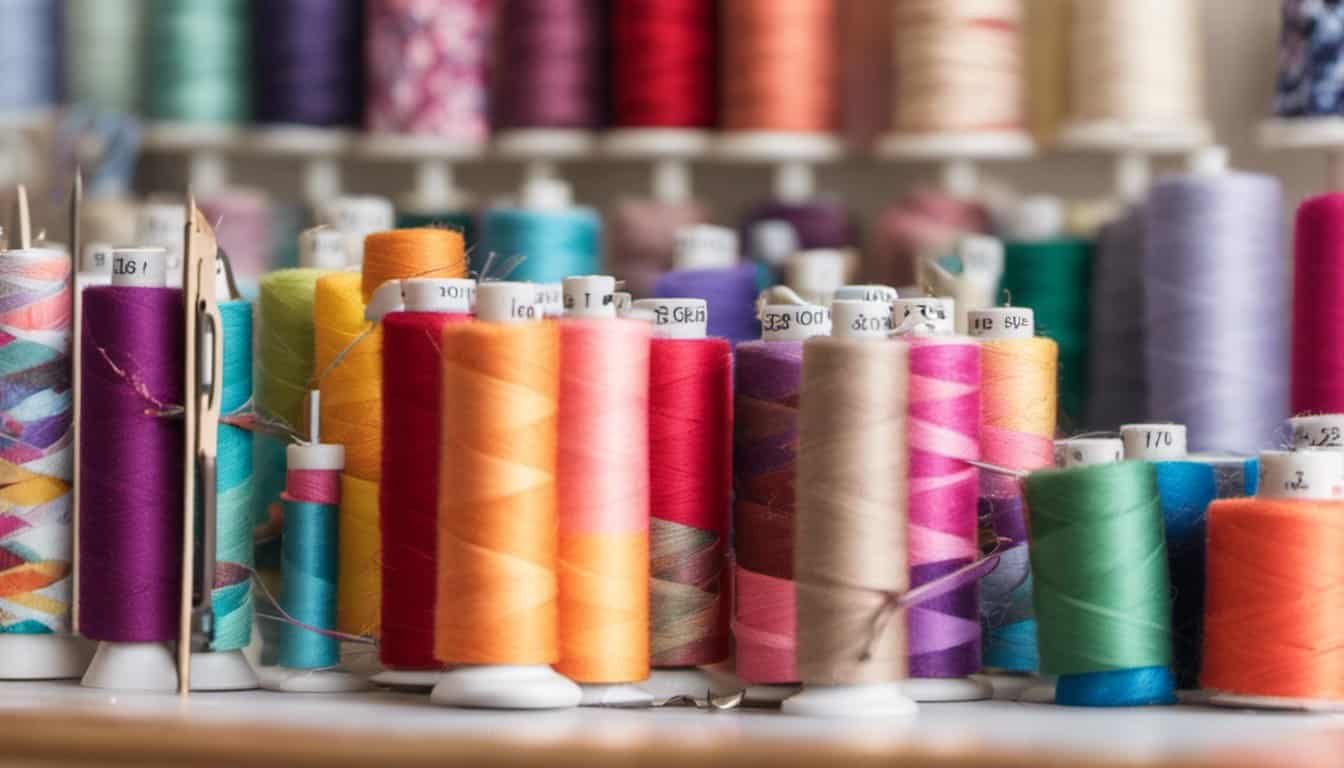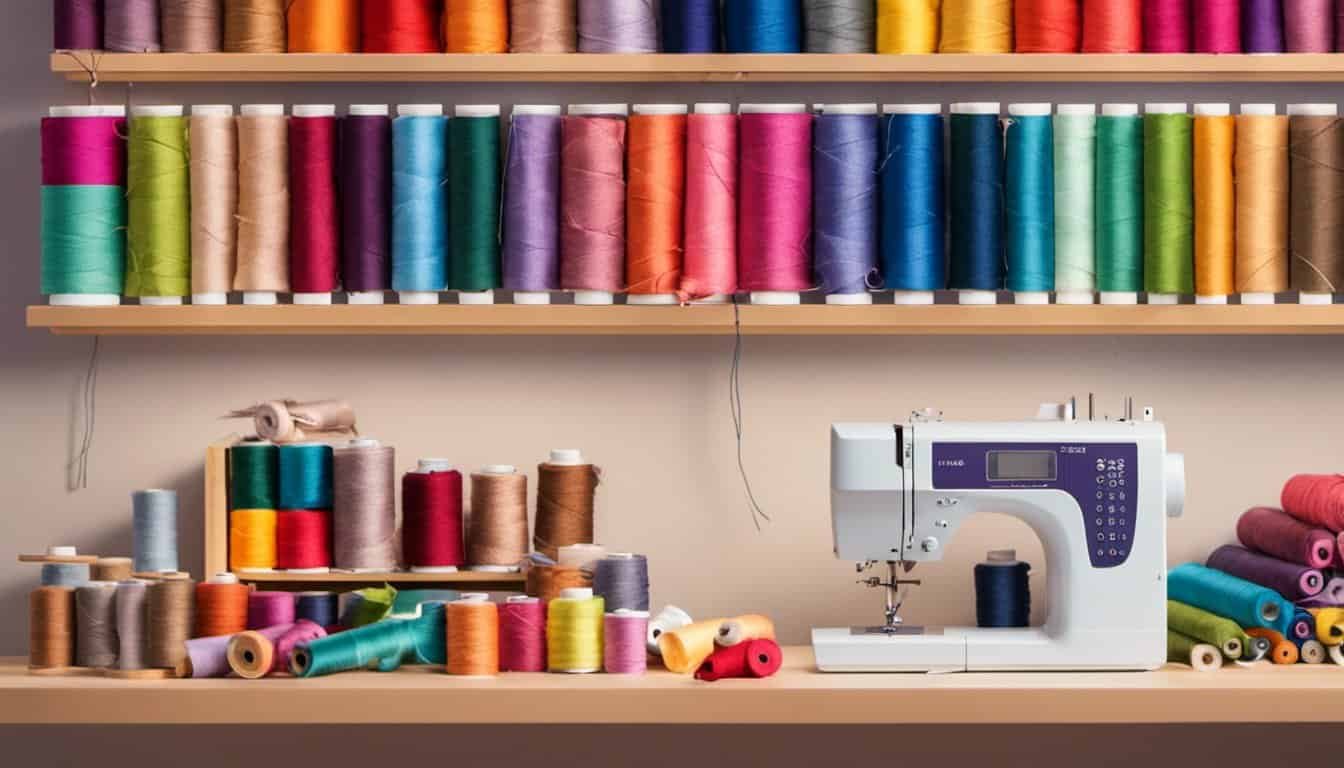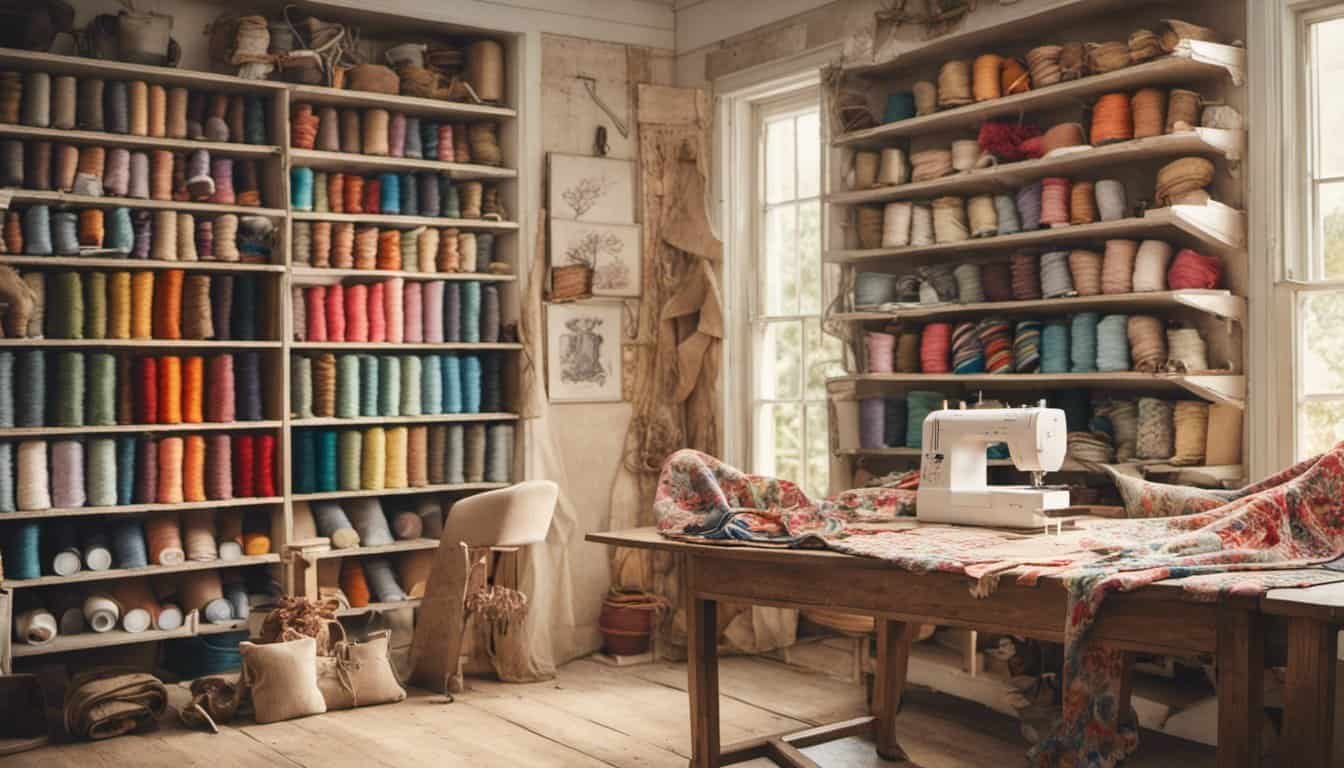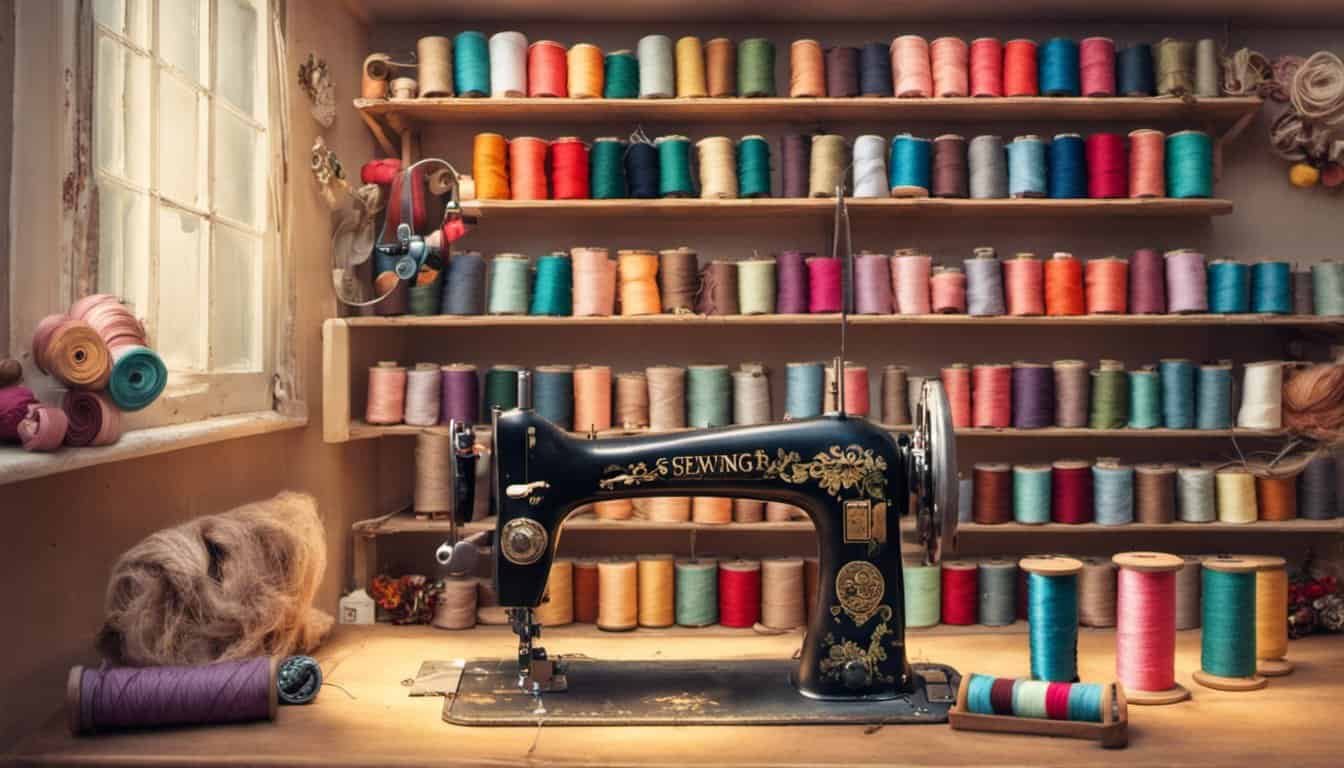Working with stretch fabrics can be a bit tricky, especially when it comes to sewing seams that move with the material. I’ve often found that mastering the zigzag stitch is key to achieving professional results every time.
In this article, I’ll walk you through the essentials of using the zigzag stitch on stretchy materials. From adjusting your sewing machine settings to choosing the right thread, you’ll gain the confidence to tackle any stretch fabric project with ease.
Understanding Stretch Fabrics
Stretch fabrics offer flexibility and comfort, making them ideal for various sewing projects. Grasping their types and properties enhances your stitching precision.
Types of Stretch Fabrics
There are four main types of stretch fabrics:
- Jersey Knit: Smooth texture, commonly used for T-shirts and dresses.
- Spandex: High elasticity, suitable for activewear and swimwear.
- Lycra: Durable stretch, often found in athletic and performance garments.
- Waffle Knit: Textured surface, perfect for cozy blankets and casual wear.
Properties of Stretch Fabrics
Stretch fabrics possess unique characteristics:
- Elasticity: Provides up to 30% stretch, allowing movement without distortion.
- Recovery: Returns to original shape after stretching, essential for garment longevity.
- Thickness: Varies from lightweight to heavyweight, affecting sewing techniques.
- Texture: Ranges from smooth to textured, influencing stitch selection and appearance.
Understanding these properties helps in selecting the right zigzag stitch settings and handling each fabric type effectively.
The Zigzag Stitch Explained
The zigzag stitch is a versatile technique crucial for sewing stretch fabrics. It ensures seams remain flexible and durable.
How It Works
The zigzag stitch creates diagonal threads that allow fabric to stretch without breaking the seam. By adjusting the stitch width and length on my sewing machine, I control the stitch’s flexibility. Wider stitches accommodate more stretch, while shorter stitches offer greater seam strength. This adaptability prevents puckering and maintains the fabric’s shape during movement.
Benefits for Stretch Fabrics
- Flexibility: The stitch moves with the fabric, allowing garments to stretch naturally.
- Durability: Strong seams resist tearing and wear from repeated stretching.
- Versatility: Suitable for various fabrics like jersey knit, spandex, lycra, and waffle knit.
- Comfort: Seam flexibility enhances the garment’s comfort and fit.
- Ease of Use: Simple adjustments on the sewing machine make it accessible for different projects.
| Benefit | Description |
|---|---|
| Flexibility | Allows fabric to stretch naturally without seam issues |
| Durability | Resists tearing and wear from continuous use |
| Versatility | Works with jersey knit, spandex, lycra, and more |
| Comfort | Enhances garment fit and comfort |
| Ease of Use | Simple machine adjustments for various projects |
Setting Up Your Sewing Machine
I ensure my sewing machine is properly set up for working with stretch fabrics. This involves adjusting key settings to achieve the best results.
Adjusting Tension
I set the tension to medium, around 4-5, to allow the fabric to stretch without puckering. If the seams tighten too much, I lower the tension one step at a time until the stitches balance correctly.
Selecting the Right Needle
I use a stretch or ballpoint needle, typically size 80/12 or 90/14, depending on the fabric’s thickness. If the fabric snags, I switch to a finer needle to ensure smooth stitching on elastic materials.
Mastering Zigzag Techniques
Using the right zigzag techniques ensures strong and flexible seams on stretch fabrics. Here’s how to optimize your stitching for the best results.
Basic Zigzag Stitch
The basic zigzag stitch creates diagonal threads that allow fabrics to stretch without seam failure. I set the stitch width to 2-3 mm and the stitch length to 3-4 clicks for balanced flexibility and strength. Testing on scrap fabric helps me ensure even stitching and adjust settings as needed for different fabric types.
Narrow vs Wide Zigzag
Narrow zigzags offer less stretch and more durability, ideal for lightweight materials like Lycra and spandex. Wide zigzags provide greater flexibility, suitable for thicker fabrics such as waffle knit and jersey. Selecting the appropriate zigzag width based on fabric type enhances seam performance and longevity.

Common Challenges and Solutions
- Puckering and Gatherings
Puckering occurs when the fabric bunches along the seam. Adjust the tension to medium (4-5) and use a stretch or ballpoint needle (size 80/12 or 90/14) based on fabric thickness. Testing on scrap fabric ensures smooth stitching.
- Broken Threads and Skipped Stitches
Broken threads result from dull needles or improper threading. Replace the needle regularly and verify the threading path. Ensure the bobbin is correctly inserted and wound to prevent skips.
- Uneven Stitch Width or Length
Uneven stitches weaken seams. Calibrate the sewing machine settings and consistently check stitch width (2-3 mm) and length (3-4 clicks). Test stitches on scrap fabric to maintain uniformity.
- Fabric Stretching or Distortion
Stretching fabric during sewing leads to distorted seams. Use stabilizers and guide the fabric gently without pulling. Maintain consistent fabric tension to preserve its shape.
- Inflexible Seams
Inflexible seams restrict fabric movement. Increase the stitch width to 3-4 mm and reduce stitch length slightly. This adjustment enhances seam flexibility and allows the fabric to stretch naturally.
- Thread Breakage
« Discover What Is a Fell Stitch and How to Use It to Transform Your Sewing Projects
Unlock Expert Tips on How to Sew a Reinforced Seam for Heavy Fabrics Today »
Thread breakage disrupts the sewing process. Use high-quality, polyester thread compatible with stretch fabrics. Ensure correct tension settings and avoid using excessive thread spool pressure.
- Needle Snagging Fabric
Fabric snagging causes runs and snags in the material. Switch to a finer needle if snags occur and ensure the needle is properly inserted. Regularly clean the sewing machine to prevent debris build-up.
- Seam Slippage
Seam slippage weakens the garment structure. Reinforce seams with backstitching at the beginning and end. Use the appropriate stitch type and settings to maintain seam integrity under stress.
Advanced Tips for Perfect Stitches
Optimize Stitch Width and Length: Adjusting stitch width between 2.5 to 3.5 mm accommodates various fabric stretch levels, while setting stitch length to 3.0 mm ensures balanced flexibility and strength.
Select High-Quality Thread: Using polyester or nylon threads enhances elasticity and durability, preventing seam breakage on demanding stretch fabrics.

Utilize Stabilizers: Applying tear-away or water-soluble stabilizers reinforces seams, reducing puckering and maintaining fabric integrity during use.
Pre-Wash Fabrics: Washing stretch materials before sewing minimizes shrinkage and distortion, ensuring accurate stitching and fit in the final project.
Test on Scrap Fabric: Experimenting with stitch settings on a fabric scrap identifies optimal adjustments, preventing issues like uneven stitching or thread tension problems.
Incorporate Double Zigzag Stitches: Adding a second zigzag line strengthens seams, providing extra durability for high-stress areas in garments or accessories.
Manage Seam Allowances: Maintaining consistent seam allowances of 1.5 cm accommodates fabric stretch, allowing seams to expand without compromising garment structure.

Use Ballpoint Needles: Selecting size 90/14 ballpoint needles reduces fabric snagging, ensuring smooth stitching on knitted and stretchy materials.
Control Fabric Feeding: Guiding fabric evenly through the machine prevents stretching and distortion, resulting in straight, professional-looking seams.
Adjust Machine Tension: Setting sewing machine tension to a medium level (around 4-5) avoids puckering and ensures balanced stitch formation on stretch fabrics.
Choose Appropriate Foot Pressure: Lowering presser foot pressure accommodates thicker or highly elastic fabrics, facilitating smoother needle penetration and consistent stitching.
Maintain Clean Machine Maintenance: Regularly cleaning the sewing machine removes lint and debris, promoting optimal performance and preventing stitch irregularities.

Employ Stretch-Friendly Thread Tops: Using thread tops designed for stretch fabrics enhances elasticity, allowing seams to move seamlessly with the material.
Implement Seam Reinforcement: Backstitching at seam beginnings and ends secures threads, preventing unraveling and enhancing overall seam strength.
Monitor Machine Speed: Sewing at a moderate speed maintains control, ensuring precise stitch placement and reducing the risk of missed or uneven stitches.
By applying these advanced techniques, you can achieve flawless zigzag stitches that complement the flexibility and resilience of stretch fabrics, elevating your sewing projects to a professional level.
Conclusion
Mastering the zigzag stitch has truly transformed the way I work with stretch fabrics. It’s amazing how a simple adjustment can make such a big difference in the flexibility and durability of my projects. I feel more confident taking on new stretch fabric challenges and creating garments that not only look great but also move comfortably.

Experimenting with different stitch settings and threads has opened up endless possibilities for my sewing. Every project now feels more manageable and enjoyable. I can’t wait to apply these techniques to even more creative ideas. Embracing the zigzag stitch has definitely elevated my sewing game and made working with stretch fabrics a breeze.

















